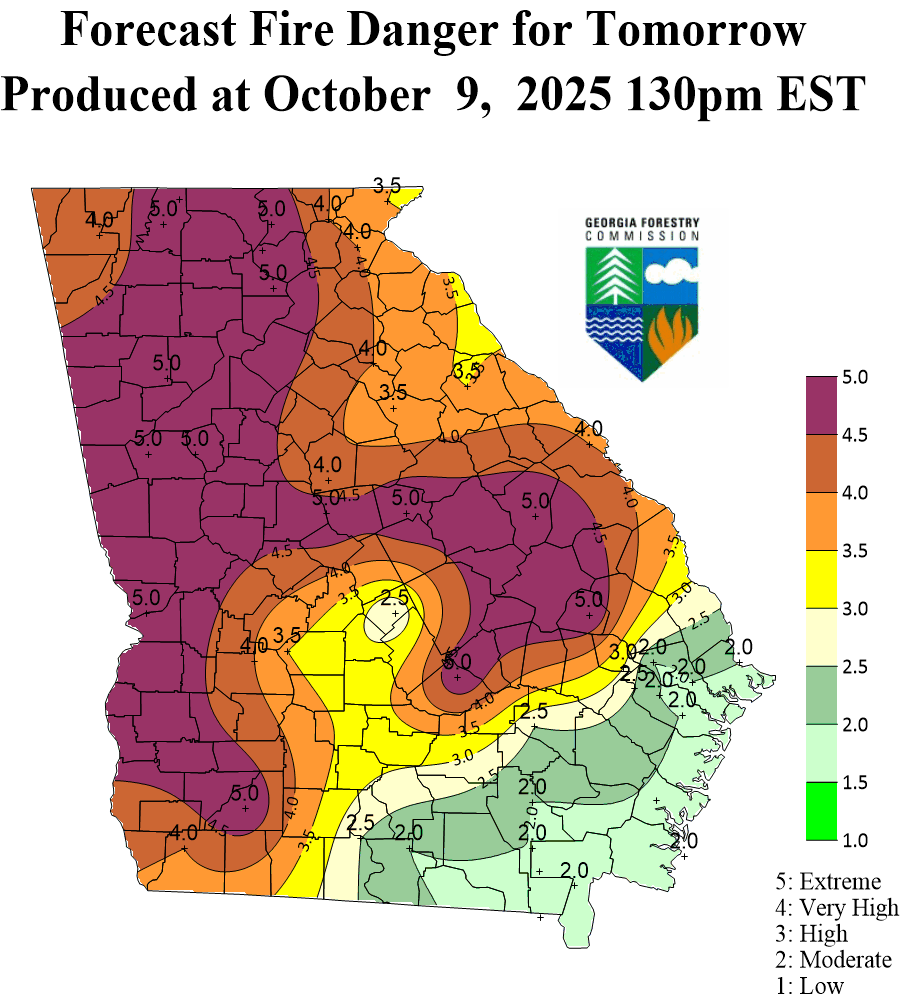Metro Atlanta hasn’t seen much rain in the past several weeks, causing drought conditions to worsen.
The region’s southwest quarter (Douglas, south Fulton, Fayette, Clayton and Coweta counties) is now under a severe drought, the second level in severity, with the rest remaining in the moderate range, according to the U.S. Drought Monitor.
With such dry conditions, wildfire risks remain a concern.
“We just haven’t seen any consistent rainfall, and we really need some heavy rain,” Channel 2 Action News meteorologist Ashley Kramlich said.
And it’s not just the metro area. About 18% of the state is under a severe drought as of Thursday, Kramlich said.
South Georgia has it worse. Extreme drought has set in over Colquitt, Tift, Worth, Mitchell and a sliver of Thomas and Grady counties.
The Georgia Forestry Commission is warning of “extreme” fire danger — the most dangerous category — over a large portion of the state stretching through North and Middle Georgia, then through the southwest corner.
The fire risk over the rest of Georgia varies from “moderate” to “very high.”
Credit: Georgia Forestry Commission
Credit: Georgia Forestry Commission
Despite the commission’s warning, the National Weather Service has not issued a fire danger statement as of Friday, citing that humidity levels have not fallen below the 25% threshold. The forecasts differ because the commission uses several additional weather and environmental factors from its hyperlocal offices to develop its model, spokesperson Stasia Kelly said.
Since Sept. 1, nearly 350 wildfires have burned 1,675 acres across Georgia, according to commission spokesperson Wendy Burnett. Although fire outbreaks this month have slowed, last month finished at 167% above the five-year average. The acreage burned was 366% above average.
If you have to burn outdoors, be cautious and pay attention to your city’s or county’s burn ordinances.
“Don’t be a ham sandwich burner,” Kelly said. Don’t walk away from a fire to grab lunch — or for any other reason — especially on high-risk days. You might “come back out and the whole yard’s on fire,” she said.
So when will we get out of this drought?
Some areas, such as Smyrna on Thursday evening, have been lucky enough to see isolated downpours. But it’s not enough and doesn’t cover enough ground to provide any relief. It’s going to take several days with more than an inch or two of rain to make up for the year’s 5¼ inch deficit, NWS meteorologist Brett Albright said.
“It took some time for us to get into it. It’s going to take some time to get out,” he said.
In Atlanta, for example, the last time the city saw more than an inch of rain was nearly two months ago, on Aug. 19. It was enough to finish the month slightly above normal, but September was exceptionally dry with less than a quarter-inch of rain. July also finished below normal, with just over 2½ inches compared with the 30-year average of 4¼ inches.
This month, there has been barely any measurable rain recorded at the NWS Hartsfield-Jackson Atlanta International Airport gauge.
Fall is the driest season in the Southeast, and October is usually the driest month in Georgia. But usually, tropical systems will push in some moisture, which is what helped end a similar dry spell last year when Hurricane Helene dumped a historic 11.12 inches of rain over the city in a 48-hour period.
However, that is “an example of how you don’t want to get out of a drought,” Albright cautioned.
So far this year, the atmospheric pattern over the U.S. has blocked storms from making landfall and instead pushed them back over the Atlantic Ocean.
Locally, the next best chance of rain — 20% — comes Sunday.
About the Author
Keep Reading
The Latest
Featured



